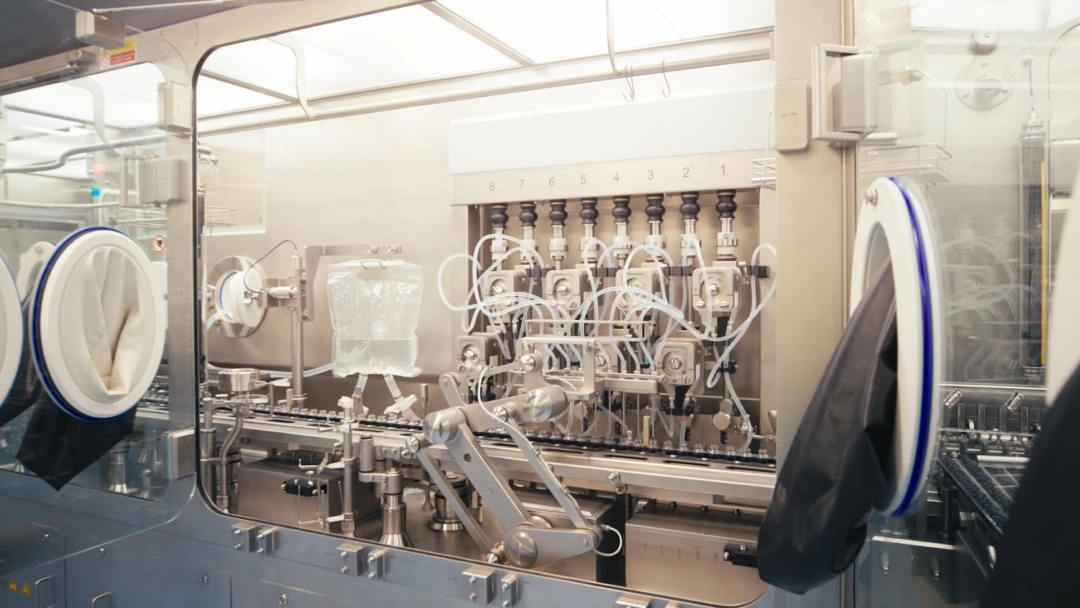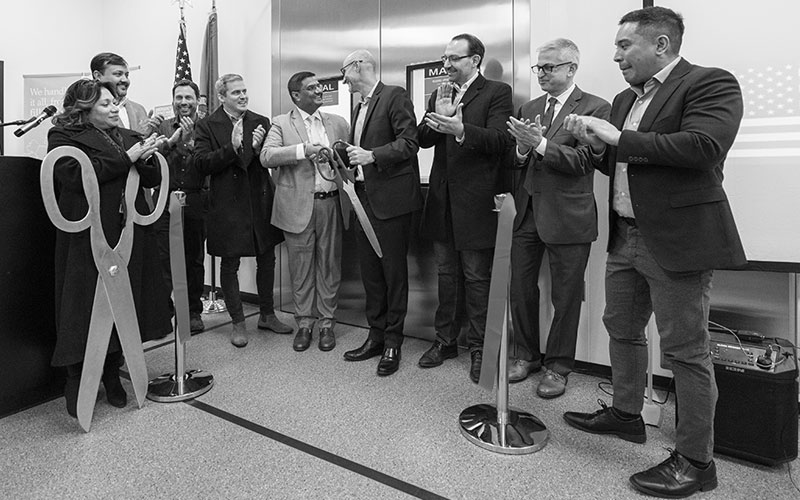
In the pharmaceutical industry, the journey from drug discovery to commercial production is complex and highly regulated. When a company partners with a contract manufacturing organization (CMO), there is a process that bridges the gap between research and development (R&D) and large-scale manufacturing called technology transfer.
This process ensures that a drug developed in a laboratory can be manufactured consistently, safely, and at scale by the partnered CMO. For pharmaceutical companies partnering with CMOs like Jubilant HollisterStier, understanding the steps and importance, and what JHS does differently, is essential for the success of pharmaceutical products for the patients.
What is Technology Transfer?
Technology transfer refers to the process of transferring the knowledge, skills, methods, and data developed during drug discovery or early-stage research to a CMO, which will handle full-scale production. It involves a comprehensive transfer of manufacturing processes, analytical methods, product specifications, and quality controls.
This process is not limited to one phase of drug development. It spans across multiple stages, from clinical trials to commercial-scale manufacturing. Technology transfer is one of the most important aspects to ensure that the product made in the lab can be produced consistently and efficiently in larger quantities without compromising quality or safety.
Key Stakeholders in Technology Transfer
The two primary stakeholders in technology transfer are the pharmaceutical company and the CMO. While the pharmaceutical company holds the intellectual property and the material from the drug’s development phase, the CMO brings expertise in large-scale production, regulatory compliance, and supply chain management. Both parties must collaborate closely to ensure that the transfer is successful.
The key stakeholders within the process itself include project managers from both companies, the R&D teams, the manufacturing teams, the regulatory affairs specialists, and the quality assurance teams. And lastly, the main stakeholder that must be considered no matter the step as the product is manufactured is the patient who utilizes the product.
The Stages of Technology Transfer
The process of technology transfer is structured and involves several key stages. Each stage guarantees a seamless transition from lab-scale to commercial production.
1. Process Development and Documentation
The first stage of technology transfer is process development. In this stage, the pharmaceutical company provides the CMO with detailed documentation of the drug’s formulation, the manufacturing process, and other critical information. This data, often referred to as the technology transfer package, includes specification for raw materials, in-process controls, and final product characteristics.
Proper documentation is vital because it serves as the foundation on which the CMO builds the commercial manufacturing process. Without detailed and accurate documentation, scaling up to larger batches could result in process inconsistencies and quality issues.
2. Analytical Method Transfer
Once the process development documentation is in place, the next step is analytical method transfer. This step involves transferring the testing methods developed during the R&D phase to the CMO’s laboratory. These methods are essential to the quality, safety, and efficacy of the final drug product.
The CMO must validate these methods to meet regulatory requirements so that the product is suitable for commercial-scale production. Analytical method transfer ensures that every batch of the drug will meet the required specifications, regardless of the productions scale.
3. Pilot Scale-Up
Before full-scale production can begin, everything must be tested on a smaller scale, known as the pilot scale. This step allows the CMO to identify and resolve any potential issues with the manufacturing process before moving to larger production runs.
During the pilot scale-up, the CMO tests whether the process can be replicated consistently and can maintain the same quality as it did during the R&D phase of the project. Adjustments may be needed to optimize commercial production, such as refining the timing of certain steps or modifying equipment settings.
4. Commercial Scale Manufacturing
Once the pilot scale-up is successful and the process has been validated, the final stage is commercial-scale manufacturing. This is where the CMO produces the drug in large quantities for distribution. At this stage, all the processes, controls, and analytical methods must be in place and functioning optimally so that every batch meets regulatory standards.
Commercial-scale manufacturing involves constant monitoring, quality control, and documentation to guarantee that the product is safe, effective, and consistent. The success of technology transfer is evident when the product can be manufactured at scale with minimal deviation from the specifications established during the R&D phase.
Challenges in Technology Transfer
Technology transfer is a complex process which naturally comes with challenges that both pharmaceutical companies and CMOs must navigate.
1. Technological Challenges
One of the main challenges is technical in nature. Scaling up from lab-scale to commercial production often reveals differences in equipment, process variability, or material handling that were not apparent during R&D. The CMO must ensure that the manufacturing process can be replicated precisely on a larger scale, even if equipment and production environments differ from the original lab set up.
Formulation challenges can also arise, especially if the product is sensitive to changes in temperature, humidity, or handling. Process optimization may be necessary to address these technical difficulties while maintaining product quality.
2. Communication Barriers
Clear and open communication between the pharmaceutical company and the CMO determines the success of the technology transfer. Miscommunication or lack of clarity regarding the manufacturing process, quality standards, or regulatory expectations can lead to errors, delays, and costly rework. Both parties must establish effective communication channels so that information is accurately conveyed and understood.
3. Time and Cost Efficiency
An efficient technology transfer process can save both time and money, for both the pharmaceutical company and the CMO. By identifying and resolving potential production issues early in the transfer, pharmaceutical companies can avoid costly delays and minimize the risk of rework or batch failures.
4. Risk Mitigation
Technology transfer helps mitigate risks associated with scaling up production. By thoroughly testing and validating processes at each stage of transfer, CMOs can reduce the likelihood of production issues, regulatory setbacks, or quality concerns.
Modernization and Trends in Technology Transfer
1. Digitalization and Automation
Digital tools, such as data management systems and automated production technologies, are playing an increasingly important role in technology transfer. These tools help streamline the transfer process by improving data accuracy, reducing human error, and enabling real-time monitoring of production processes.
2. Globalization of Manufacturing
As companies expand their operations globally, technology transfer must adapt to the challenges of manufacturing in different regions, along with working with teams from a variety of backgrounds and cultures. This has led to the development of standardized processes and guidelines to ensure that products can be manufactured consistently across multiple sites.
Technology transfer is an important component of the pharmaceutical contract manufacturing industry, enabling the seamless transition from drug development to large-scale production. By understanding the stages and challenges of technology transfer, pharmaceutical companies and CMOs can work together to ensure that their products are manufactured efficiently, cost-effectively, and with the highest quality standards. As technology continues to evolve, so will the processes and strategies that drive successful technology transfer in the industry.
If you would like to know more about how Jubilant HollisterStier manages our technology transfers, check out our white paper that highlights what makes our team different.
Additional References
- Olena Chervonenko, and Gerardo Gomez. “Keys to Successful Technology Transfer.” Bioprocessintl.com, 12 June 2024, www.bioprocessintl.com/information-technology/keys-to-successful-technology-transfer. Accessed 20 Sept. 2024.
- “Tech Transfer: Unraveling the Complexities – BioProcess International.” Www.bioprocessintl.com, www.bioprocessintl.com/contract-services/unraveling-the-complexities-of-technology-transfer.
- Zhang, Mingming. “Pilot-Scale Studies, Scaling-Up, and Technology Transfer.” Springer EBooks, 20 Oct. 2022, pp. 161–167, https://doi.org/10.1007/978-3-031-10102-1_9.




